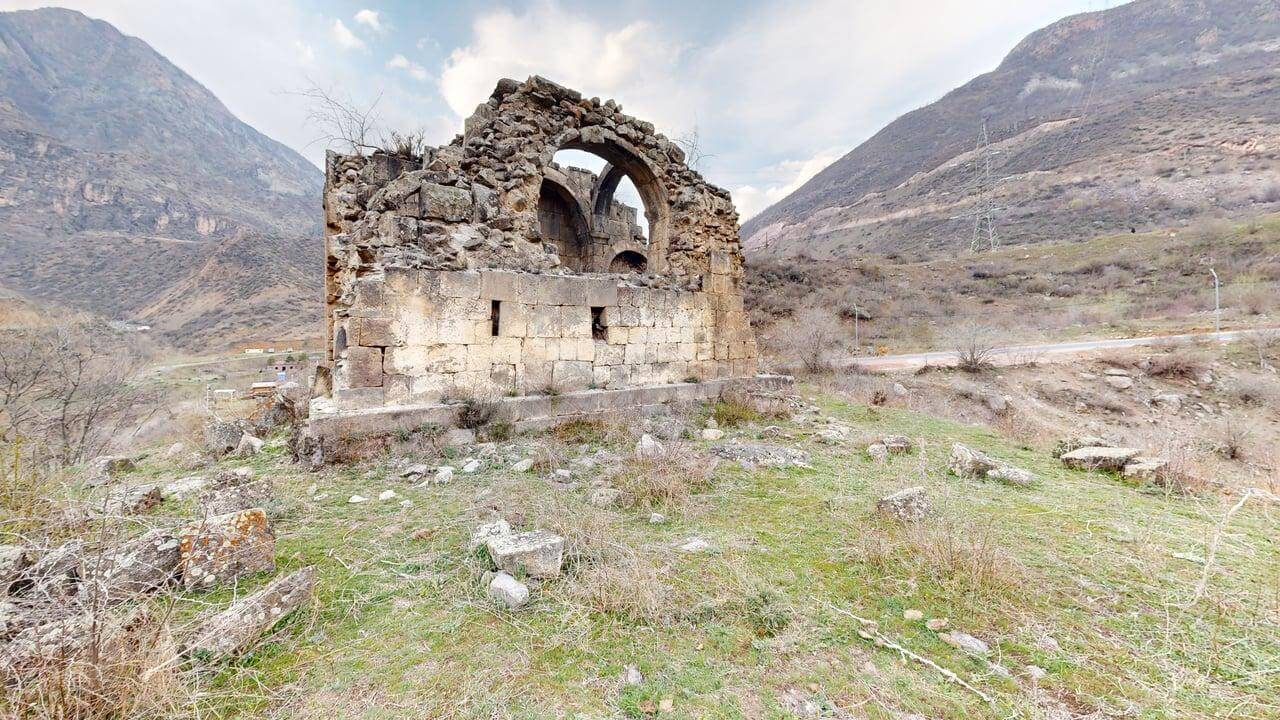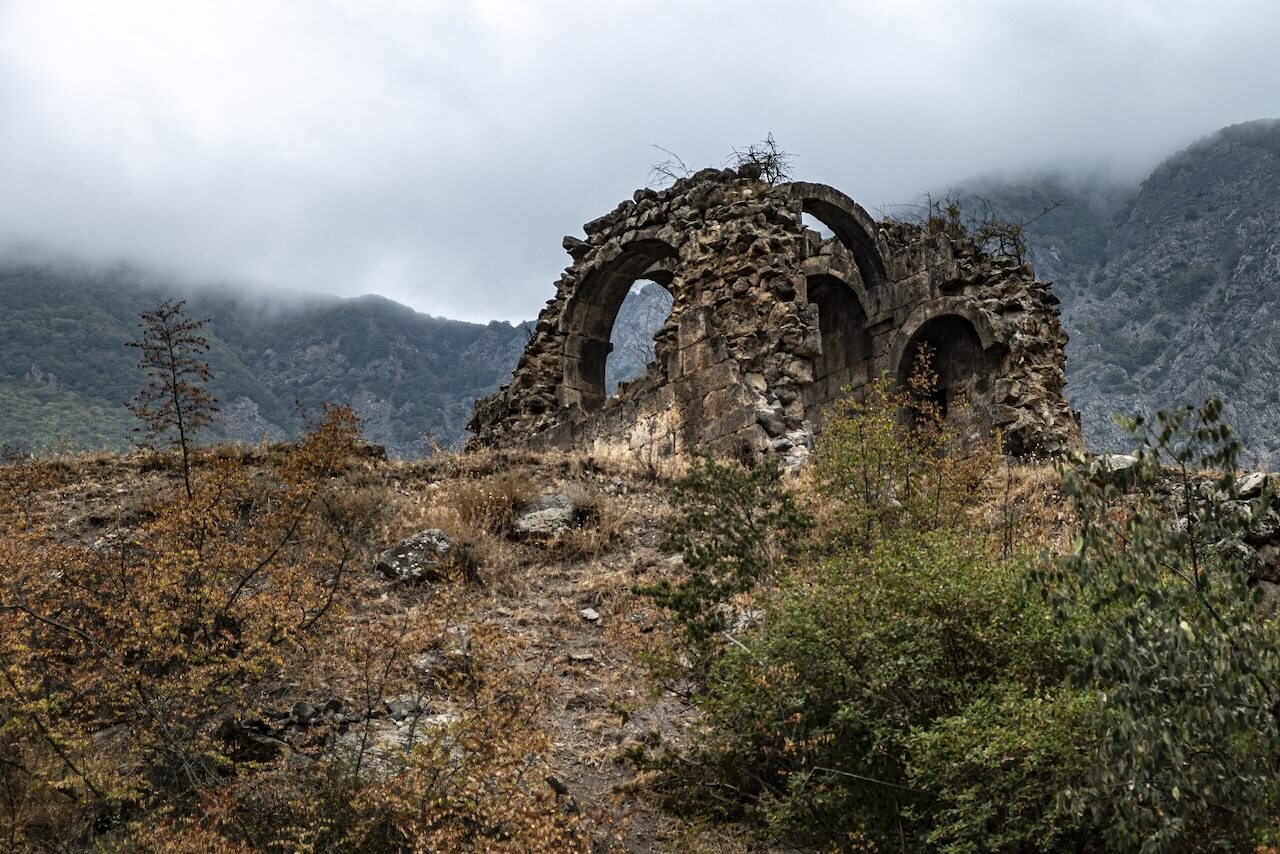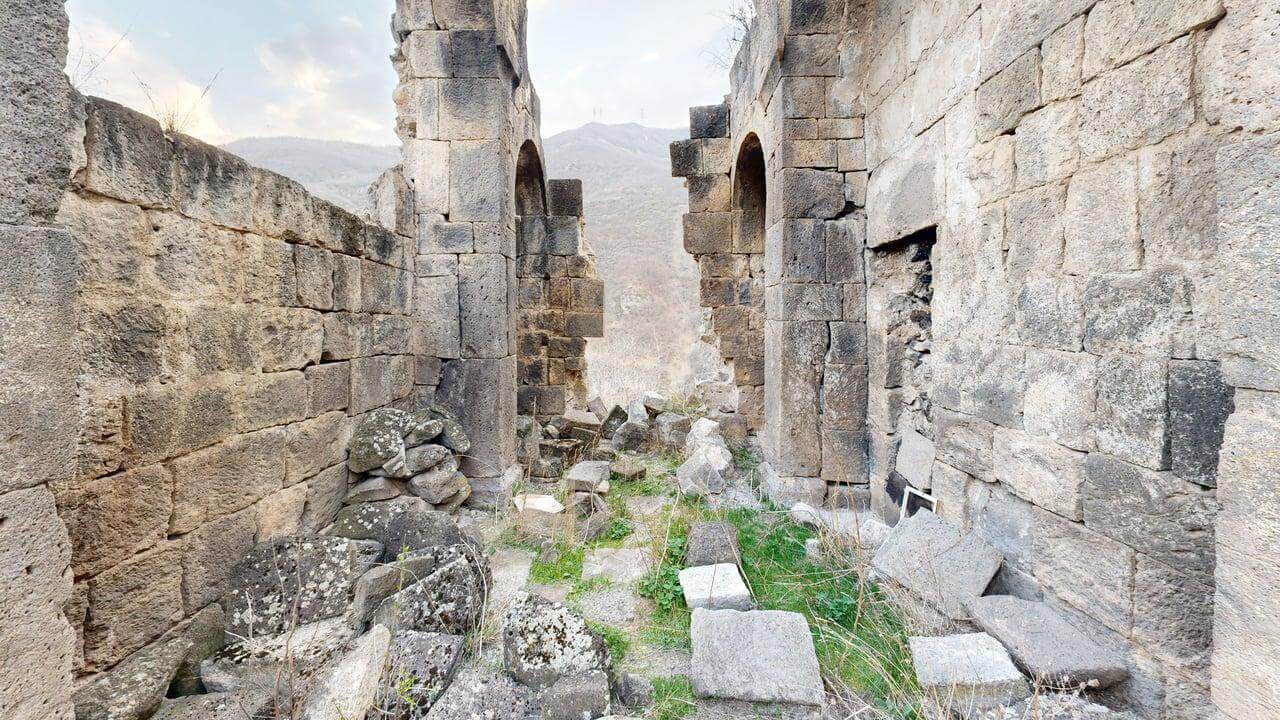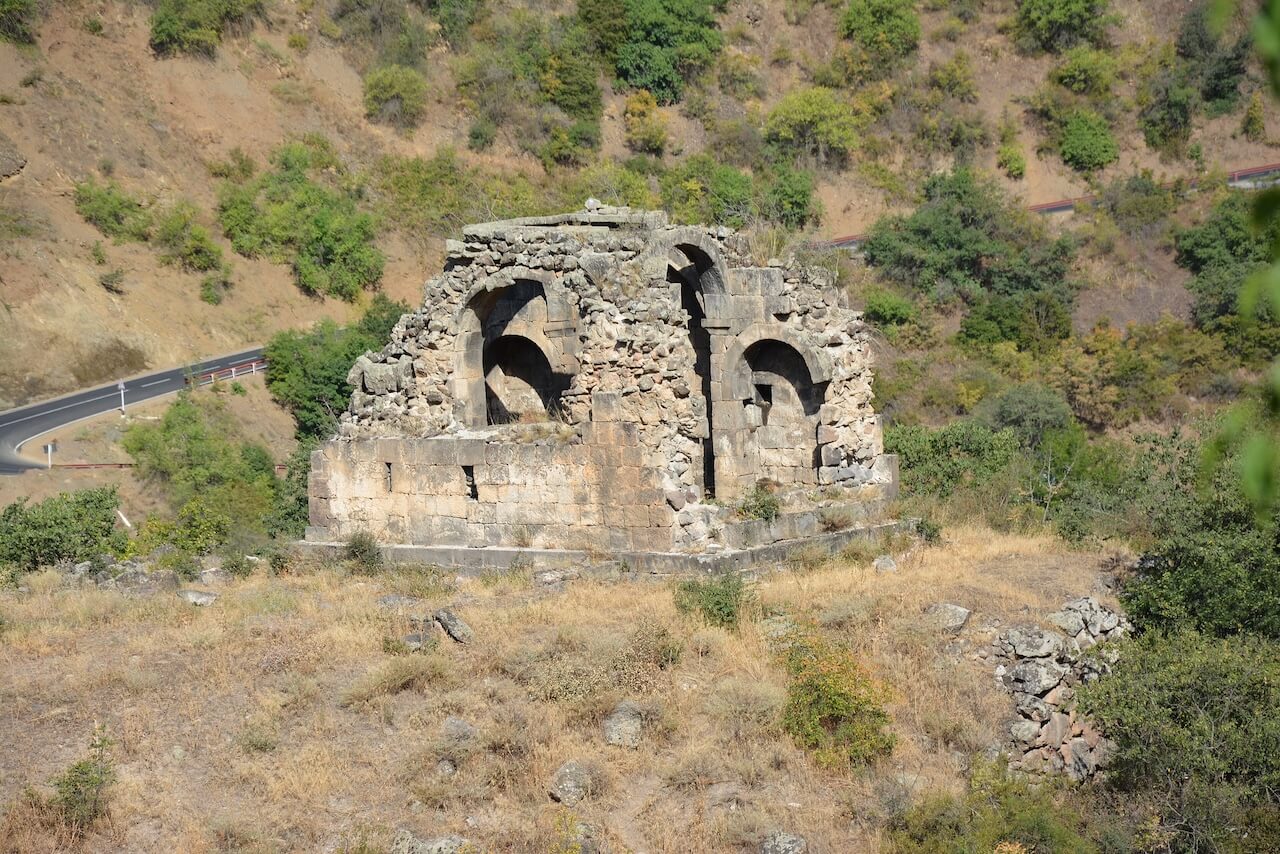Tsakut Church
Tsakuti Church is an Armenian Apostolic Church located in Syunik Province, to the north of the village of Tatev, on the left bank of the Vorotan River. It was built in the 10th century.
The church was built by Bishop Hakob I of Syunik, the brother of Catholicos Hovhannes Draskhanakerttsi, who ordained him in 918 AD.
CONTACT INFORMATION
VIRTUAL TOUR
3D Model
About Tsakut Church
According to historian Stepan Orbelyan, Bishop Hakob I traveled from Prince Pilipé of Syunik to a spring called Varáraqn in the Dzagedzor region. After enduring many hardships, he reached the place known as Tsakut, located across from the Tatev Monastery. He then transformed the area into a vast garden of roses and fruit trees, also planting vineyards. He leveled the hill-like terrain and built a church on that site. The church had a dome and was richly decorated with frescoes. The bishop left behind a manuscript inscription stating that the construction was completed in 932 AD.
The church was built of finely cut basalt stones and featured a domed design. Two pairs of large engaged columns were attached to the longitudinal walls. It had a rectangular apse with a semi-circular floor, approximately 30 cm deep. The only entrance was on the western side. The church’s arches and supporting arches were horseshoe-shaped. One of the unique features of the church is its altar design, which is considered rare among Armenian monuments. The altar combines a rectangular structure with a semi-circular floor, forming a harmonious whole.
Unfortunately, the church’s dome, vaults, and eastern wall have collapsed, and almost none of the original frescoes have survived. There was also a water spring nearby, which had served locals for centuries. Today, the church area resembles its ancient state—rocky and overgrown with thorns—hence the origin of its name.






